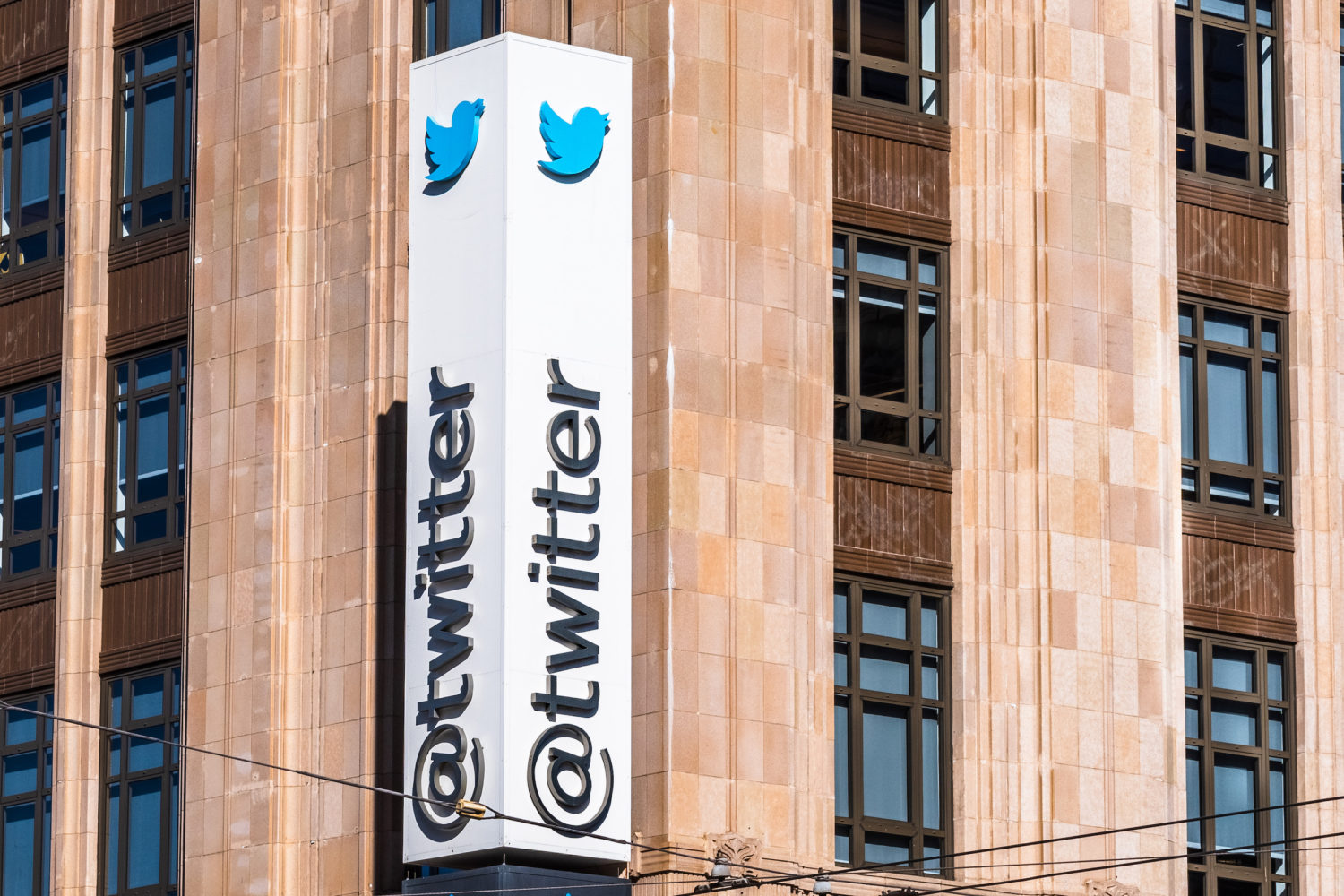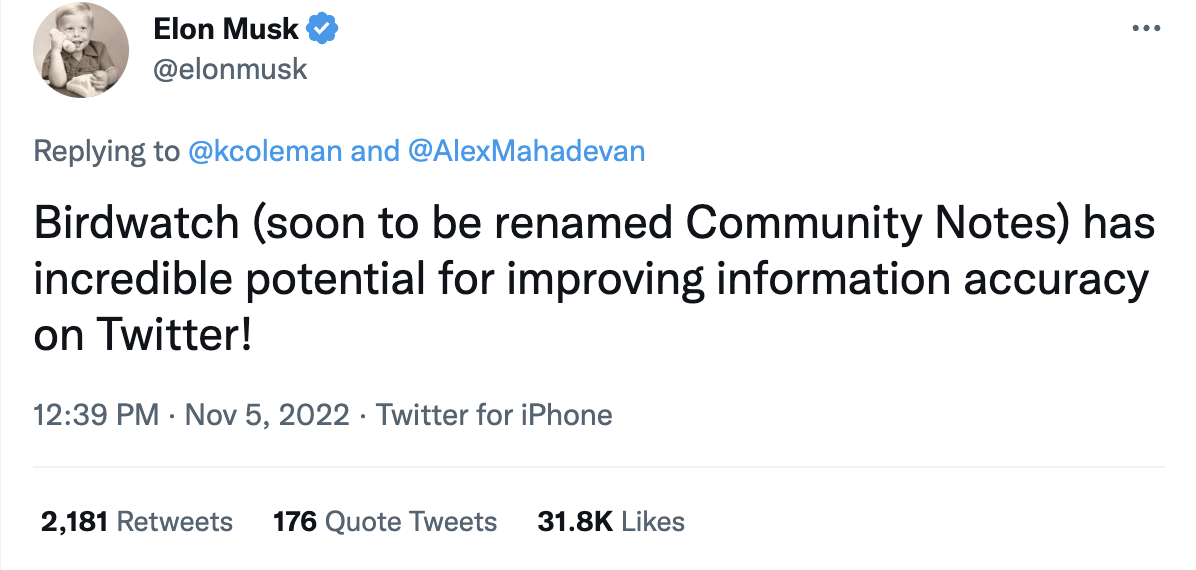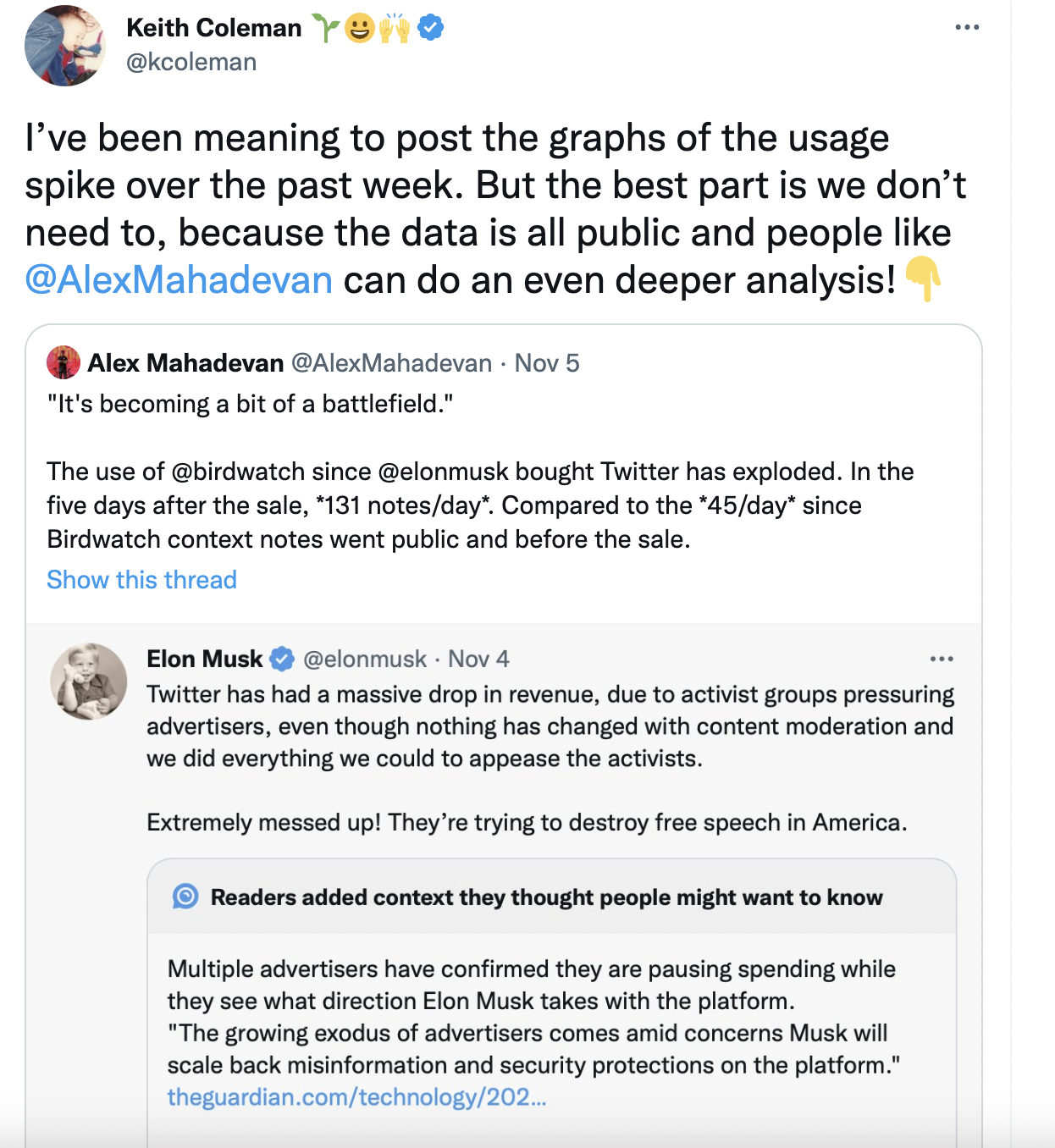After tech billionaire Elon Musk bought Twitter, some thought Birdwatch was bound for extinction.
However, despite being a frequent target of citizen fact-checkers — and sharing falsehoods himself — Musk endorsed Twitter’s tool this weekend in the fight against misinformation. The crowdsourced fact-checking experiment, which he plans to rename “Community Notes,” rolled out to the public last month.
At its launch in the start of 2021, Twitter called Birdwatch “a pilot of a new community-driven approach to help address misleading information on Twitter.” That pilot ended and, in early October, Twitter made the tool public for users in the U.S. Ever since, contextual notes have been popping up under tweets from political figures, institutions, comedians and billionaires.
The user-generated “notes” contain information about potentially misleading tweets, a sort of “misinformation flag.” Annotations become visible once the Birdwatch algorithm deems them “helpful,” based on a variety of factors, including positive ratings and bipartisan consensus.
Likewise, a public note can disappear if it’s down-ranked enough by the algorithm. (Some Birdwatch users, who have organized on private Discord servers, have lamented the relatively few number of public notes, given the volume of private ones. As it turns out, algorithmic consensus is difficult to obtain.)
When users submit annotations, they are greeted by a message from Twitter: “To identify notes that are helpful to a wide range of people, note statuses require agreement between contributors who have sometimes disagreed in their past ratings.”
“People valued notes being in the community’s voice (rather than that of Twitter or a central authority) and appreciated that notes provided useful context to help them better understand and evaluate a Tweet (rather than focusing on labeling content as ‘true’ or ‘false’,” wrote Keith Coleman, Twitter’s vice president of product.
Since its introduction last year, note quality has improved by leaps and bounds. And with it, activity on the platform has grown.
Use of Birdwatch exploded following Musk’s purchase. Birdwatchers logged an average of 41 notes per day — a total of 207 in the five days leading up to the Oct. 28 close. After the acquisition, the number of notes per day more than tripled to 131, for a total of 787.
The algorithm, Birdwatch representatives explained, is unique from other social media algorithms in that it tries to form consensus between groups with different perspectives. The aim is to avoid bias, pile-ons and abuse by including ratings from diverse contributors.
“The stated goal of Birdwatch is ‘to add helpful context to Tweets.’ It is not to adjudicate facts or to be a universal source of information,” reads one Birdwatch under a Musk tweet.
Birdwatch also includes a mechanism to control partisan brigading, which, in theory, makes the platform more palatable and less polarizing. Since the notes are generated by users and not a central authority, or Twitter itself, Birdwatch aims to dispel the perception of platform censorship, which can often be misguided.
“Birdwatch works by using bridging-based ranking,” Birdwatch tweeted from its Twitter account last month. “Rather than majority rules, or popularity, Birdwatch shows notes that are found helpful by people who tend to disagree (in their Birdwatch ratings). This increases the odds that context added to Tweets is helpful to wide audiences.”
Birdwatch has garnered both bipartisan support and criticism. Misinformation researchers have positively weighed in, with one study demonstrating that contextualizing notes reduced engagement on misleading posts by as much as 34%
“I think Birdwatch has the potential to be a really good thing. The added context is interesting; the fact that it’s harder to dismiss any output as the work of ‘Big Fact-check’ is a strong point in its favor,” wrote Renee DiResta, an influential researcher at Stanford Internet Observatory.
“I have been saying this for a month: Birdwatch is a good fact-checking system,” tweeted Robby Soave, a senior editor at Reason Magazine and the co-host of Rising, an independent news analysis show at The Hill.
As Musk and Twitter founder Jack Dorsey sparred over the name “Birdwatch” Sunday night, questions remained about the platform’s ability to efficiently fight the flood of falsehoods ahead of the midterm elections.
“This feature is an absolute game-changer for fighting mis/disinformation at scale,” Musk tweeted Saturday. However, as of Nov. 2, there were only 113 notes which were logged after Musk’s purchase visible to the public — up from 34 before — which accounts for only 14% of the total notes submitted by Birdwatchers.
Of the community notes made public after the purchase, only one addresses misleading information about voting and elections. Dozens are about Birdwatch itself. One is about the vaccination status of a red panda at the Toronto Zoo. And several surfaced in reference to the Rahul Ligma fiasco.












“Use of Birdwatch exploded following Musk’s purchase. Birdwatchers logged an average of 41 notes per day — a total of 207 in the five days leading up to the Oct. 28 close. After the acquisition, the number of notes per day more than tripled to 131, for a total of 787.”
The article could do a better job of distinguishing between notes submitted by Birdwatch users and those surfaced to the public by the algorithm.
As the article later says, “(A)s of Nov. 2, there were only 113 notes visible to the public.”
A spike in Birdwatch activity that isn’t visible to the public isn’t as notable as a corresponding spike in surfaced (public) notes.